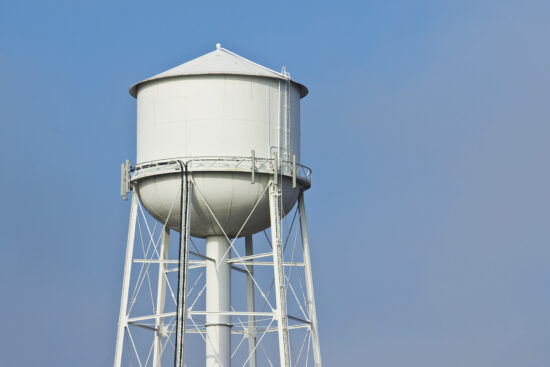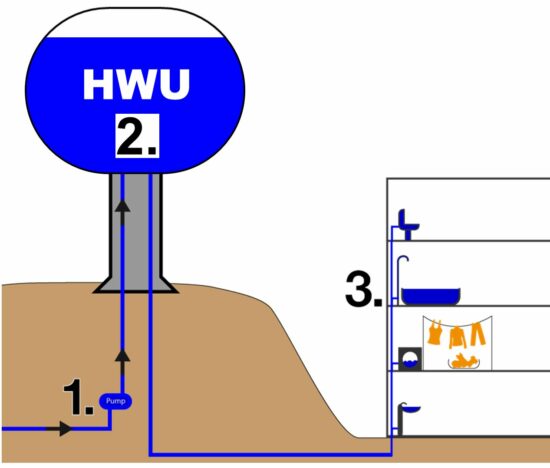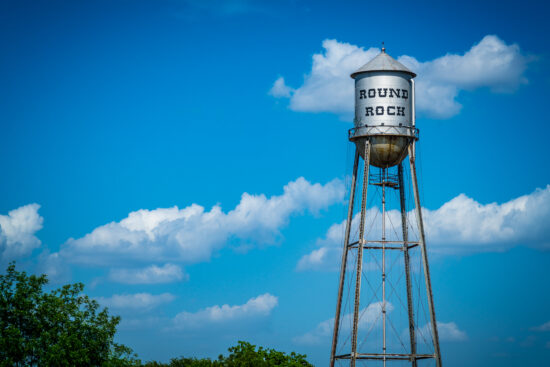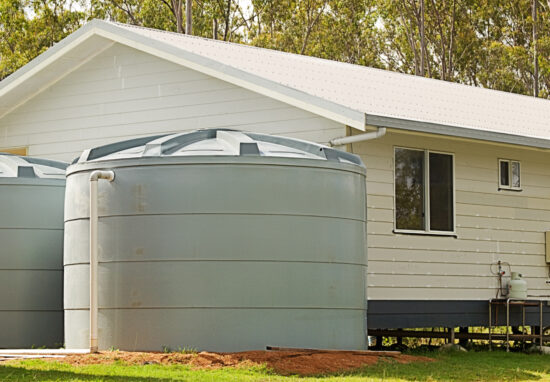Have you ever been driving down the highway and noticed a large metal tank on top of a tower? This water tower is essential to many communities’ water supply systems.
This blog post will explore what these towers do and why they are so important. So sit back, relax, and join us as we look closer at the water towers!

How Water Towers Work
Water towers are simple machines that use gravity to pressure and distribute water. Clean, treated water is pumped into the tank and stored until needed. When more water is required, the potential energy stored in the tank forces the water through the distribution pipes.
Water towers are designed to work without electricity for a limited time, making them an essential part of many communities’ water infrastructure. From their basic design to the types of materials used in their construction, water towers have been used for centuries to provide clean, safe drinking water.

Benefits of Water Towers
One of the primary benefits of water towers is that they help to meet peak consumption needs. This means that additional pumping power is not necessary to meet demand. Additionally, water towers can work without electricity, as they rely on gravity to send water through the distribution pipes. This means that even if there is a power outage, water can still be supplied.
Furthermore, when demand goes down at night, pumps can replace the water in the tower. Therefore, water towers allow for reliable and efficient water distribution in various scenarios.
Types of Water Towers: A Closer Look
Water towers come in various shapes and materials, each with its advantages and applications. Some common types include:
- Traditional Welded Steel Water Towers: These consist of a large, cylindrical tank supported by an open column and beam framework.
- Composite Elevated Water Towers: Combining a steel or composite tank with a concrete pedestal, these towers offer the best features of both materials.
- Pedestal or Multi-Legged Water Towers: Designed with multiple support legs for exceptional stability and strength, these towers can withstand high winds or seismic activity.
- Hydro-Pneumatic Water Towers: Typically located underground, these tanks work with a pump or other water distribution systems to provide consistent and reliable water pressure regardless of demand.
Table 1: Comparison of Water Tower Types
| Type | Pros | Cons |
| Traditional Welded Steel | Cost-effective, easy to construct, versatile | Susceptible to corrosion, requires regular maintenance |
| Composite Elevated | Durable, low maintenance, strong | Higher initial cost |
| Pedestal or Multi-Legged | Exceptional stability and strength, suitable for high winds or seismic activity | More complex construction, potentially higher cost |
| Hydro-Pneumatic | Consistent and reliable water pressure, space-saving | Requires regular pump maintenance, less visible for monitoring |

Design of Water Towers
The design of water towers has gone through many phases since the late 1800s. Today, rectangular water towers are designed as small monolithic service reservoirs, with a floor slab supported on an open column and beam framework.
This design helps reduce water distribution costs by allowing for the centralization of pumping and pressurization and decreasing the energy needed to pump the water. Different water towers exist, such as elevated steel tanks, ground-level reservoirs, and underground cisterns. Each tower type is designed differently to meet its environment’s needs and provide the best possible water supply.
History of Water Towers
Water towers have been a part of our history for a long time. The Louisville Water Tower is the oldest ornamental water tower in the world and was built in 1860. It is a decorative tower that features ten unique zinc statues.

Commonplace in the early 20th century, riveted tanks such as Studios Water Tower, built in 1927, is reminiscent of the tin witch’s hat. Water towers are located on high ground to provide enough pressure to send water into a municipal water supply with enough force to supply households and businesses with clean drinking water.
Uses for Water Towers
Water towers typically store potable water and provide consistent pressure to water distribution systems. They also often serve as an emergency backup water source in case of power outages or other service interruptions.
Additionally, some water towers are used for recreational purposes, such as swimming pools and water slides, or aesthetic purposes in parks or other public places. Finally, many water towers have been converted into observation decks and tourist attractions.
Maintenance of Water Towers
Maintaining water towers is important for ensuring the safety and health of the surrounding community. Regular inspections and cleaning are required to prevent the buildup of sediment, which can harbor bacteria like Legionella.
Proper maintenance is key to keeping water towers safe and reliable, providing clean pressurized water for distribution.
The Future of Water Towers
The future of water towers looks to be one of adaptation and creativity. As the global population continues to grow and more areas become urbanized, water towers will need to be designed in ways that are more efficient and sustainable.
Technologies such as rainwater harvesting, greywater reuse, and water recycling will help meet the demand for fresh water in the coming years.

Additionally, materials, construction techniques, and design advances will lead to lighter-weight and longer-lasting water towers that can better withstand natural disasters or other environmental changes. As cities continue to expand, water towers will likely remain a vital part of our infrastructure for generations to come.
Conclusion
In conclusion, water towers serve a variety of critical functions for communities. They provide a reliable source of drinking water for households, support firefighting efforts, and ensure adequate pressure for fire hydrants.
Water towers are also important for the planet’s health, as they are highly susceptible to climate change and other environmental threats.
Lastly, water towers come in many sizes and shapes, and careful design and maintenance are essential to ensure their long-term success. Water towers have been around for centuries and remain a vital part of our infrastructure today.

Jay
Jay is a health and wellness enthusiast with expertise in water quality and nutrition. As a knowledgeable advocate for holistic well-being, Jay successfully manages Type 2 Diabetes through informed lifestyle choices. Committed to sharing reliable and authoritative insights, Jay combines firsthand experience with a passion for enhancing health."

